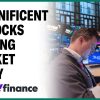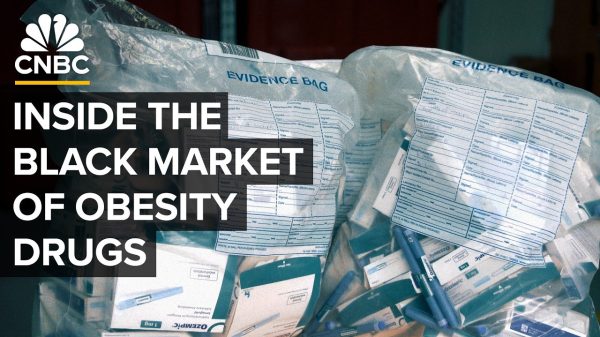Lori Calvasina, head of U.S. equity strategy at RBC Capital Markets, has a knack for combining the quantitative and narrative elements of investing. For Calvasina, it isn’t just about building complex models and seeing what they spit out. Incorporating history, politics, and market sentiment can make or break an investment thesis.
With an early background in government and foreign affairs, followed by a two-decade career in equity strategy at Citi, Credit Suisse, and now RBC, Calvasina has had a front-row seat to several market cycles—the dot-com boom and bust, the financial crisis, and the Covid-19 crash and bull market. She has a 4,250-point price target for the
S&P 500
at the end of 2023, some 4.5% below the index’s current level. The benchmark index is up about 16% year to date.
Barron’s sat down with Calvasina in late June to discuss what’s in store for the market in the second half of the year, why this time might really be different, and what investors are missing. An edited version of the conversation follows.
Barron’s: You’ve compared the current market and economic backdrop to 1945, another postcrisis period that saw big changes in the economy and the degree of government support. What does that comparison reveal?
Lori Calvasina: The rule of thumb is that the stock market never bottoms before a recession begins. That suggests there needs to be another big drawdown coming up that takes us below the October 2022 lows. But there is one historical example in which the market continued to rise into and straight through a recession.
Historians will generally describe the 1945 recession as a technical recession driven by a transition from a wartime economy to a peacetime economy. You saw a massive drawdown in government spending. That’s analogous to today: The Covid economy really was like a wartime economy, and now you have the withdrawal of a lot of the fiscal and monetary support.
There are other parallels. Both consumption and private investment remained really strong. It was an intense inflationary backdrop, with a big ramp-up in 1944 and a slight cooling off in 1945 before inflation accelerated again in 1946. The unemployment rate went up but topped out around 4%. The increase was also driven by soldiers coming back home, dislocating some of the civilian workers. The interest-rate environment was different; rates were relatively low and flat.
It feels to me like the market was just looking through the recession [which occurred from February 1945 to October 1945]. Yes, we have this kind of technical recession happening, but it is because of the withdrawal of the support. The underlying economy is still pretty healthy. So the market essentially ignored it.
What happened in 1946?
The market wasn’t so great. Inflation came roaring back. But historians also talk about how World War II was the thing that got the economy out of its Great Depression funk, which had lasted for a decade. It has an economic legacy as a restorative element.
The economy between the 2008-09 financial crisis and the Covid pandemic certainly didn’t resemble the Great Depression, but it always felt like it was below potential. We had low inflation, low interest rates, and pretty weak economic growth. That’s one of the reasons why growth stocks got into such a bubble: People were chasing secular-growth opportunities because there was a perception that the underlying economy just wasn’t that exciting.
Are you suggesting the Covid-related shock to the economy will also be restorative?
Maybe not immediately, but there are a lot of similarities. One is related to the reindustrialization of America—the reshoring thesis. Will all the money being poured into the domestic economy help rebalance our labor market and give us a more dynamic and exciting economy?
Even before Covid, the benefits of globalization had started to come under serious question. The supply-chain crisis during Covid added to that debate. It showed us we need to invest more at home.
You lifted your year-end S&P 500 price target in May to 4,250 from 4,100. How did you derive that forecast?
It is based on several different models we’ve built, tied to the economy, valuations, earnings, sentiment, and other factors. Our most bearish model starts with an assumption of zero growth in gross domestic product in 2023, which is close to the consensus forecast, and that gets us to around 3,800 points for the S&P 500.
The most bullish model requires inflation to continue to moderate, as forecasts predict, and interest rates to at least stabilize. That could get us to a multiple of 21.8 times trailing 12-month earnings for the S&P 500, or a price target of 4,650.
Averaging all six of our models gets us to roughly 4,250 points.
The S&P 500 is trading for 4,450, or 22 times trailing earnings. Will you adjust your forecast, or do you expect the market to decline later this year?
Our base case is that the S&P 500 is at 4,250 at the end of the year, which would still be a strong 11% rise for the year—justified by progress on inflation and peaking interest rates—but down about 4.5% from today’s level. Relative to bond yields, stocks appear expensive, and the consensus forecast for economic growth is poor. Investor sentiment has improved to more neutral levels. We no longer have the extreme bearishness that we saw at the start of the year, which was a powerful contrarian indicator.
What is the biggest risk facing the stock market?
Right now, the market is pricing in a short and shallow recession that largely plays out in 2023 or perhaps the first quarter of 2024. If it is deep and lasts later into next year, you’re going to have problems in the stock market.
A lot depends on the path of inflation and how the Federal Reserve reacts. Today the consensus forecast has inflation returning to close to 2% by the end of 2024. That’s optimistic, in my view, but markets don’t care what Lori Calvasina says the consumer price index is going to do. It’s all about where the collective wisdom is trending. If inflation comes down and the 2024 recovery appears as expected, then where the market has been trading looks more reasonable.
Are you concerned about the market’s narrow breadth in 2023? Take out seven or eight megacap technology stocks and the market is essentially flat this year.
I understand the logic that if a few stocks are driving the market and something goes wrong with them, the market has a problem. But I have never seen anybody build a model that tells me that when the market is narrow, you need to sell it. It’s just not that predictive.
“I favor old-economy technology. That means software and semiconductor companies, not internet companies. Valuations are more appealing.”
There are two ways it can go from here: Something could go wrong with those winning companies and pull the market down, or the market’s leadership could broaden out. One of those paths isn’t automatically more likely than the other.
We went back and looked at all the historical spikes in market concentration. The distribution of outcomes is pretty even following those episodes. A narrow market is something that happens when people get nervous. It is a symptom of negativity and people buying what they know, but it isn’t a predictive factor.
What are your sector recommendations?
We recommend a balance: some defensive stocks, some value, and some growth. I expect leadership to shift away from technology, but at the same time, economic growth is going to be sluggish. Growth stocks typically do well in that environment.
You just need to be selective in your growth exposure. I favor old-economy technology. That means software and semiconductor companies, not internet companies. Valuations are more appealing outside of the biggest names.
I also like energy stocks. Energy has a high dividend yield relative to other sectors and versus its history, and energy companies have been active in buying back stock. I haven’t seen any indication in earnings-call transcripts that we are going to see any change in the buyback profile. We are sensing some weakening regarding financial companies’ enthusiasm for buybacks, so that is an interesting contrast. Earnings revisions for energy have been negative, but they are getting better.
On the defensive side, I would highlight healthcare. Utilities are expensive. Staples are expensive. Healthcare is seeing a nice and broad improvement in earnings-revision trends. The sector appears attractive in our models.
Which sectors should investors avoid?
Among large-cap stocks, I don’t like consumer discretionary. It’s expensive. The 2024 recovery is already priced in. If that 2024 recovery disappoints, or we end up with something more severe than a mild recession in the back half of this year, consumer discretionary looks expensive. I don’t love the risk/reward.
If I want to play a consumer-rebound trade, I would much rather do it in small-cap consumer discretionary stocks. It’s one of the cheapest sectors relative to its large-cap equivalent. You tend to see small-cap consumer discretionary stocks really outperform in a recovery.
You were a small-caps strategist earlier in your career. What do you think of small-caps generally?
I’m bullish on small-caps. They are undervalued right now. The
Russell 2000
has a higher weight in financials than the
Russell 1000,
but it isn’t just troubled regional banks making small-caps look cheap. It’s just about every sector outside of defensives like utilities.
The forward price-to-earnings multiple on the Russell 2000 tends to bottom out between 11 and 13 times in market downturns. Last summer it hit 11 and has since rebounded to around 15 times. But that’s still below average and at the low end of its historic range. The Russell 2000’s 2021 valuation high was nearly 20 times forward earnings.
For small-caps to really work, the market has to have increased confidence in a 2024 economic recovery. Small-caps are more domestically focused than large-caps. They are bearing the brunt of shifting investor sentiment about a 2024 recovery.
That same domestic focus could become a strength now that the recovery in China is falling short of expectations, if it makes relative U.S. growth appear stronger. And let’s go back to that long-term reshoring and reindustrialization theme. If we’re going to reinvigorate the U.S. economy, our domestically focused companies are a better place to be.
Thank you, Lori.
Write to Nicholas Jasinski at [email protected]
Read the full article here











